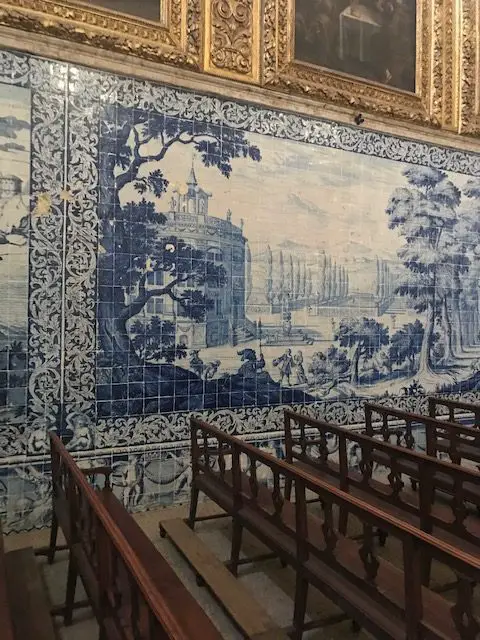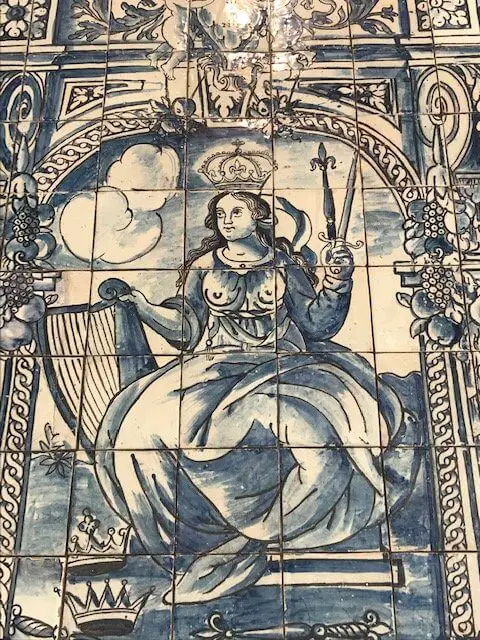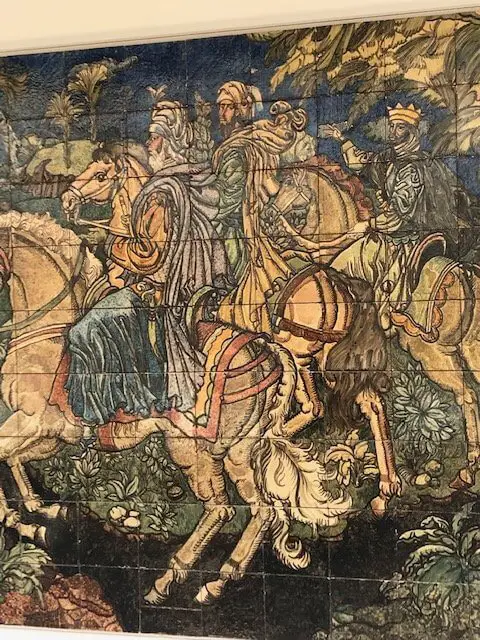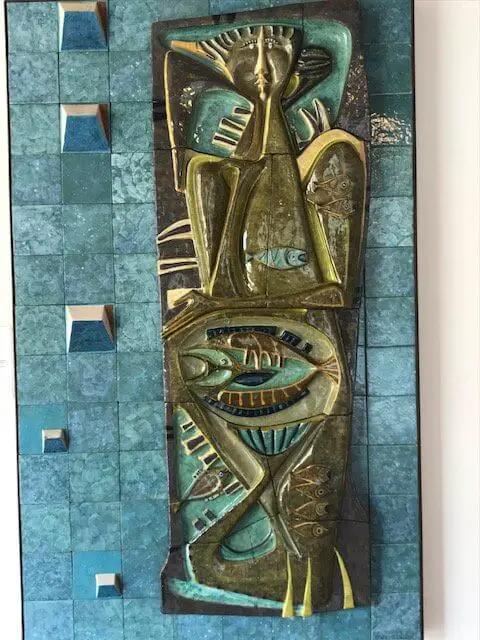The National Tile Museum in Lisbon | A Quick Guide will introduce you to one of Lisbon’s lesser-known gems.
This museum is a little off the beaten track, but should not be missed.
Is the National Tile Museum in Lisbon worth visiting?
Yes! The National Tile Museum (Museu Nacional do Azulejo) is absolutely worth visiting. It is housed in one of the oldest public buildings in Lisbon – the Convento da Madre de Deus (The Convent of the Mother of God) which was built in 1509.
Inside the unassuming convent, you will find one of the most stunning churches in Lisbon – the golden Church of Madre de Deus. And of course, a huge collection of cultural treasures.

Where is the National Tile Museum?
Rua Madre de Deus, 4
GPS: 38.7247989987916, -9.113825531076927
T: 351 218 100 340
How to get to the National Tile Museum
The Museu do Azulejo is located in the industrial Xabregas neighborhood, so it will take a little effort to get there – but, it is absolutely worth the effort.
There is a bus stop in front of the museum. Buses 718, 742, 794, (759 only at night)
There is another bus stop on Avenida Dom Henrique (a five-minute walk). Buses 728 and 759 stop there.
Uber or taxi are options as well, as there is no metro station in the area.

National Tile Museum (Museu do Azulejo) Hours and Tickets
Hours: 10 AM till 1 PM, 2 PM till 6 PM
Closed Mondays
Admission: €5
There are also package tickets:
Frente Riberirinha: Riverfront Ticket – Includes the National Tile Museum, National Ancient Art Museum, and the National Pantheon €15
Azulejo e Panteão – This ticket gets you into the National Tile Museum and the National Pantheon. €7
The Lisboa 8 Museums ticket includes the National Tile Museum, the Dr. Anastácio Conçalves House Museum, the Music Museum, the Chiado Museum, the National Ancient Art Museum, the National Costume Museum, the National Theatre Museum, and the National Pantheon. This ticket is €25.
Senior discount is 50%.

One of the coolest things about the National Tile Musem is that every Sunday at 2 pm, they offer a free tile-making workshop that is open to all ages. You can make your own souvenir from Lisbon!
It is also worth noting that the museum offers a free app/audioguide that can be downloaded from Google Play or iTunes.
There are free docent-guided tours of the convent and museum on the first and third Sunday of the month at 3:30 pm. Appointments are necessary.
The museum is accessible for those who have impaired movement, hearing, or vision.
Official website: http://www.museudoazulejo.gov.pt/en-GB/Default.aspx

About the National Tile Museum
Aside from the Manueline-style door, the exterior of the convent reflects the vows of poverty of the Order of Santa Clara.
The exterior does not hint at the opulence you will inside.
The convent was founded in 1509 by Queen Dona Eleanor, wife of King João II and sister of King Manuel I.
As you enter the museum, you will see exhibits detailing how azulejos have been made over the last 500 years, and how that process has changed over time.
At first, you see 15th-century Muslim-style tiles with simple and then more complex geometric shapes.
Over time the tiles more frequently depict flowers, plants, and animals, and then eventually very detailed Christian and historical scenes.

On the second floor, there is a huge panorama of Lisbon prior to the 1755 earthquake.
The 23 m long panel by the Spanish painter Gabriel del Barco depicts nearly nine miles of Lisbon’s coast as seen from the river.
Many of the buildings depicted no longer exist.
There is also a collection of 20th-century tiles.



The works of Rafael Bordalo Pinheiro (1846 -1905) are featured. You can see his Art Nouveaux locusts and butterflies.
There are works by Maria Keil, who created pieces for the Lisbon Metro in the 1950s.
Other contemporary artists include Jorge Barradas, Querubim Lapa, Eduardo Nery, and Cecília de Sousa.
Even the museum cafeteria is decorated in beautiful 19th-century tilework depicting different foods.
While I love Portuguese tile, my favorite thing about the museum is probably the Baroque-style Chapel of St. Anthony.

The lower walls are completely done in blue and white tile.
The upper walls are gilded with gold and feature a variety of paintings by artists Cristovão Lopes (16th century) and Andre Gonçalves (18th century).
On the ceiling, you will find Gonçalves’ Coronation of the Virgin (1875).
Here is a panoramic view of the Madre de Deus Church. National Azulejo Museum – The Church of Madre de Deus, Lisbon, Portugal — Google Arts & Culture
If you would like to learn more about the many tiled facades in Lisbon, go to my article Lisbon’s tiled houses – A tradition you will love
I also highly recommend that you have a look at the Convento do Carmo Lisbon’s Convento do Carmo Ruins | Everything You Need to Know and the Igreja de São Roque São Roque Church in Lisbon – What to know before visiting – two stunning churches in Lisbon’s Bairro Alto neighborhood.
For information on other great museums that you can visit in Lisbon, see my article Finding the most interesting museums in Lisbon
If you purchase something from a link in this article, I may earn a small profit. Thank you for reading about the National Tile Museum in Lisbon.